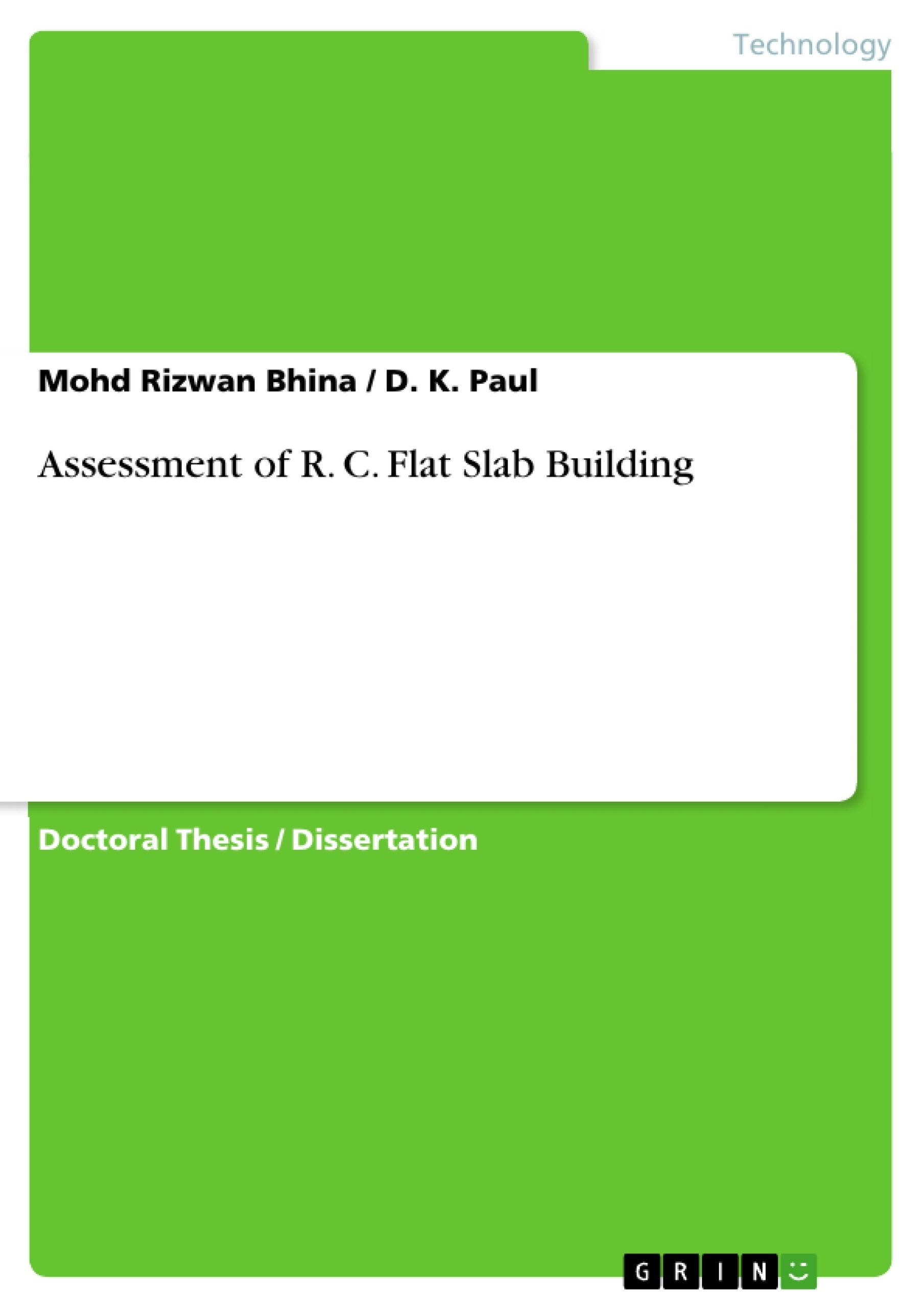Flat-Slab building is very popular from the aesthetic and architectural point of view. From functional aspect a flat-slab building is more efficient than a R.C. frame building. So, construction of Flat-Slab building is increasing also in high seismic zone. Sometimes international building codes remain silent about the seismic response of flat slab buildings. In this paper the response of Flat-Slab building and a normal symmetric R.C. frame building of same dimension have been studied for varying seismic intensities. Static, Response Spectrum, Pushover, and Time history analysis have been performed to assess the performance of the two buildings. The costs of construction for these two buildings have also been compared. An extensive study on lumped plasticity model as per FEMA 356 with varying position of plastic hinge and its effect on pushover curve has also discussed in the paper. The paper also comments on the plastic hinge pattern.
Table of Contents
- Chapter-1. INTRODUCTION
- 1. General
- 1.1 Objective of Study
- 1.2 Organization of the dissertation
- Chapter-2. LITERATURE REVIEW
- Chapter-3. MODELLING OF FLAT SLAB BUILDINGS
- 3.1. General
- 3.2 Types of flat slab
- 3.3 Different components of flat slab
- 3.3.1 Use of column head
- 3.3.2 Use of drop panel
- 3.4 Advantages of flat slab
- 3.4.1 Flexibility in room Layout
- 3.4.2 Prefabricated welded mesh
- 3.4.3 Buildable scores
- 3.5 Behavior of flat slab building during earthquake
- 3.6 Modeling of flat slab
- 3.6.1 Finite element approach
- 3.6.2 Equivalent frame method
- 3.6.3 Modified equivalent frame method
- 3.6.4 Extended beam- width procedure
- 3.6.5 Extended equivalent column method
- 3.6.6 Extended equivalent slab method
- Chapter-4. SEISMIC SAFETY OF FLAT SLAB BUILDING
- 4.1 Building data
- 4.2 Comparison of cost
- 4.3 Materials of construction
- Chapter-5. METHODS OF ANALYSIS
- 5.1 Static analysis
- 5.2 Frequency analysis
- 5.3 Response spectra
- 5.4 Design spectra
- 5.5 Push over analysis
- 5.6 Time history
- Chapter-6. RESULTS AND DISCUSSION
- 6.1 Static analysis and validation of model
- 6.2 Frequency analysis
- 6.3 Response spectra
- 6.4 Pushover Analysis
- 6.4.1 Modeling Approach
- 6.4.2 Modeling of Frame
- 6.4.3 Material nonlinearity
- 6.4.4 Geometric nonlinearity
- 6.4.5 Plastic deformation curve
- Chapter-7. STABILITY OF FLAT SLAB- A CASE STUDY
- 7.1 Structural configuration
- 7.2 Loads on the building
- 7.2.1 Earthquake Load (EL)
- 7.3 Results and discussions
Objectives and Key Themes
This dissertation aims to assess the feasibility of flat slab construction in high seismic zones, comparing its performance to conventional building designs. The study investigates cost effectiveness, response parameters, deflection behavior, and failure patterns of flat slab buildings under seismic loads. Key themes explored in the dissertation include: * **Seismic performance of flat slab buildings:** This includes analyzing their response to earthquake loads through frequency, response spectrum, pushover, and time history analyses. * **Comparison with conventional building designs:** The study contrasts flat slab buildings with conventional beam-column structures in terms of seismic resistance, cost efficiency, and deflection characteristics. * **Modeling of flat slab structures:** The dissertation explores different methods for modeling flat slabs in seismic analysis, including finite element approaches, equivalent frame methods, and extended beam-width procedures. * **Failure patterns and stability:** The study investigates the failure mechanisms of flat slabs under seismic loads and examines their stability through various analysis techniques. * **Cost-effectiveness and feasibility:** The dissertation evaluates the economic viability of flat slab construction in comparison to conventional building designs, considering their seismic performance and construction costs.Chapter Summaries
Chapter 1 provides an introduction to the topic of flat slab buildings and outlines the objectives of the dissertation. It highlights the challenges associated with flat slab construction in high seismic zones, particularly in terms of seismic vulnerability and the lack of specific design guidelines. Chapter 2 presents a comprehensive review of the existing literature on flat slab structures, exploring previous research and design practices related to their seismic performance. Chapter 3 delves into the modeling of flat slab buildings, discussing different types of flat slab construction, their components, advantages, and behavior under earthquake loads. It explores various analytical approaches for modeling flat slabs, including finite element methods, equivalent frame methods, and extended beam-width procedures. Chapter 4 examines the seismic safety of flat slab buildings, focusing on aspects like building data, cost comparisons, and the materials used in construction. Chapter 5 outlines the methods of analysis employed in the dissertation, covering static analysis, frequency analysis, response spectra, design spectra, pushover analysis, and time history analysis. Chapter 6 presents the results and discussion of the analysis conducted. It examines the findings of static analysis, frequency analysis, response spectra, pushover analysis, and time history analysis, comparing the performance of flat slab buildings to conventional structures. Chapter 7 focuses on a case study of a flat slab building, analyzing its structural configuration, load scenarios, and results of the analysis conducted.Keywords
Flat slab buildings, seismic performance, conventional building designs, earthquake loads, frequency analysis, response spectrum analysis, pushover analysis, time history analysis, cost-effectiveness, feasibility, finite element approach, equivalent frame method, extended beam-width procedure, failure patterns, stability.- Arbeit zitieren
- Mohd Rizwan Bhina (Autor:in), Dr. D. K. Paul (Autor:in), 2013, Assessment of R. C. Flat Slab Building, München, GRIN Verlag, https://www.grin.com/document/232202



